-
 Bitcoin
Bitcoin $105,854.2138
1.35% -
 Ethereum
Ethereum $2,520.4396
1.18% -
 Tether USDt
Tether USDt $1.0006
-0.01% -
 XRP
XRP $2.1816
0.36% -
 BNB
BNB $653.4391
1.15% -
 Solana
Solana $151.0436
1.09% -
 USDC
USDC $0.9998
-0.01% -
 Dogecoin
Dogecoin $0.1847
2.87% -
 TRON
TRON $0.2843
2.60% -
 Cardano
Cardano $0.6668
0.77% -
 Hyperliquid
Hyperliquid $34.6557
2.56% -
 Sui
Sui $3.2357
1.95% -
 Chainlink
Chainlink $13.7885
1.85% -
 Avalanche
Avalanche $20.8377
7.01% -
 UNUS SED LEO
UNUS SED LEO $9.1530
2.33% -
 Stellar
Stellar $0.2650
0.51% -
 Bitcoin Cash
Bitcoin Cash $406.9303
2.72% -
 Toncoin
Toncoin $3.1966
1.70% -
 Shiba Inu
Shiba Inu $0.0...01272
2.36% -
 Hedera
Hedera $0.1692
2.57% -
 Litecoin
Litecoin $88.3548
1.11% -
 Polkadot
Polkadot $4.0327
3.72% -
 Monero
Monero $327.7699
1.43% -
 Ethena USDe
Ethena USDe $1.0013
-0.01% -
 Bitget Token
Bitget Token $4.6646
1.47% -
 Dai
Dai $0.9999
-0.01% -
 Pepe
Pepe $0.0...01151
3.94% -
 Pi
Pi $0.6446
4.05% -
 Uniswap
Uniswap $6.3375
4.99% -
 Aave
Aave $258.0587
2.08%
What do you think when a small positive line with high sideways trading after the daily limit is high? A strong consolidation pattern?
A small positive line with high sideways trading after a peak in crypto may signal strong consolidation; consider volume, duration, and sentiment for trading decisions.
Jun 07, 2025 at 11:08 pm
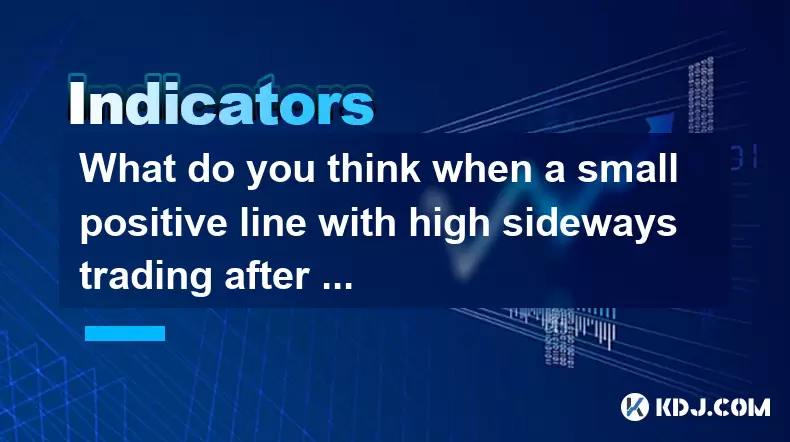
When analyzing a small positive line with high sideways trading after the daily limit is high in the cryptocurrency market, it's essential to consider various aspects of the pattern to determine if it signifies a strong consolidation. This type of price action can be indicative of several market dynamics, including consolidation, potential breakout, or even a reversal. Let's delve into the details of this pattern and what it might mean for traders.
Understanding the Pattern
A small positive line refers to a candlestick where the closing price is slightly higher than the opening price. When this occurs after the daily limit is high, it suggests that the asset has reached a peak and is now trading near that peak. High sideways trading following this peak indicates that the price is moving within a narrow range, often showing a period of consolidation.
What is Consolidation?
Consolidation is a period during which the price of an asset moves sideways within a confined range. This happens when the forces of supply and demand are nearly balanced, and it often precedes a significant price move. A strong consolidation pattern typically shows that the market is taking a breather before continuing its previous trend or reversing.
Analyzing the Small Positive Line
The small positive line after a high daily limit suggests that the market is still bullish but not strongly so. This could be interpreted as a sign of exhaustion among buyers, where they are able to push the price slightly higher but lack the momentum to continue the upward trend aggressively.
High Sideways Trading
High sideways trading following a peak can indicate that the market is in a state of indecision. Traders are not sure whether to buy more at these highs or to start selling. This type of trading often results in a tight trading range, which can be a precursor to a breakout in either direction.
Is It a Strong Consolidation Pattern?
To determine if this pattern is a strong consolidation, several factors need to be considered:
- Volume: High volume during the sideways trading can suggest strong interest and a potential for a significant move once the consolidation breaks.
- Duration: The longer the consolidation period, the more significant the subsequent move is likely to be.
- Support and Resistance: The presence of clear support and resistance levels within the consolidation range can indicate the strength of the pattern.
- Market Sentiment: Overall market sentiment and news can influence whether the consolidation will lead to a continuation or reversal of the trend.
Technical Indicators to Confirm Consolidation
To further assess the strength of this consolidation pattern, traders can use various technical indicators:
- Bollinger Bands: If the price is trading within a narrowing Bollinger Band, it suggests a strong consolidation.
- Moving Averages: A price that remains between key moving averages (e.g., 50-day and 200-day) can indicate a consolidation phase.
- Relative Strength Index (RSI): An RSI that oscillates between overbought and oversold levels within the consolidation range can confirm the pattern.
Trading Strategies Based on This Pattern
Traders can adopt different strategies depending on their interpretation of this pattern:
- Breakout Strategy: If the price breaks out of the consolidation range with high volume, traders might enter a position in the direction of the breakout.
- Range Trading: Trading within the established range by buying at support and selling at resistance can be profitable during prolonged consolidation.
- Waiting for Confirmation: Some traders might wait for a clear breakout or breakdown before taking any action, to avoid false signals.
Risk Management
Regardless of the strategy chosen, risk management is crucial. Traders should set stop-loss orders to limit potential losses if the market moves against their position. Additionally, they should only risk a small percentage of their trading capital on any single trade.
Examples from the Cryptocurrency Market
In the cryptocurrency market, such patterns are common. For instance, Bitcoin often experiences periods of consolidation after significant rallies. In 2021, after reaching new highs, Bitcoin entered a phase of high sideways trading, which eventually led to a significant breakout. Similarly, Ethereum has shown similar patterns, where a small positive line followed by high sideways trading after a peak often preceded a strong move.
Interpreting the Pattern in Different Market Conditions
The interpretation of this pattern can vary based on the broader market conditions. In a bullish market, a small positive line with high sideways trading after a high might suggest a pause before another leg up. In a bearish market, it could indicate a potential reversal or a last gasp before a downturn.
Conclusion
Analyzing a small positive line with high sideways trading after the daily limit is high requires a comprehensive understanding of market dynamics and technical indicators. While it can be a sign of strong consolidation, traders should always consider the broader context and use multiple tools to confirm their analysis. This pattern offers various trading opportunities, but it also comes with risks that need to be managed carefully.
Frequently Asked Questions
Q: How can I differentiate between a consolidation pattern and a reversal pattern?
A: Differentiating between consolidation and reversal patterns involves looking at several factors. Consolidation typically shows a tight trading range with no clear direction, often accompanied by decreasing volume. Reversals, on the other hand, are often preceded by a significant move in one direction followed by a change in momentum, which can be confirmed by indicators like the RSI or MACD showing divergence from the price.
Q: What are some common mistakes traders make when interpreting this pattern?
A: Common mistakes include jumping the gun on breakouts without waiting for confirmation, overlooking volume which is crucial for validating the strength of the pattern, and ignoring broader market trends that can influence the outcome of the consolidation.
Q: Can this pattern occur in all time frames, and does the interpretation change based on the time frame?
A: Yes, this pattern can occur in all time frames, from intraday charts to weekly or monthly charts. The interpretation can change based on the time frame; shorter time frames might show more noise and false breakouts, while longer time frames often provide more reliable signals but require more patience.
Q: How important is it to consider the overall market sentiment when analyzing this pattern?
A: Considering the overall market sentiment is crucial when analyzing this pattern. Market sentiment can significantly influence whether a consolidation leads to a continuation of the previous trend or a reversal. For example, positive news and bullish sentiment can increase the likelihood of a breakout to the upside, while negative sentiment might lead to a breakdown.
Disclaimer:info@kdj.com
The information provided is not trading advice. kdj.com does not assume any responsibility for any investments made based on the information provided in this article. Cryptocurrencies are highly volatile and it is highly recommended that you invest with caution after thorough research!
If you believe that the content used on this website infringes your copyright, please contact us immediately (info@kdj.com) and we will delete it promptly.
- Chainlink (LINK) Quietly Accumulates $36M Ahead of Potential Breakout: Is a Rally Brewing?
- 2025-06-08 05:35:15
- PEPE Price Gains, Stellar Eyes Breakout, While BlockDAG's $0.0019 Limited-Time Offer Ranks It the Top Crypto to Buy Right Now
- 2025-06-08 05:35:15
- Could It Finally Be Time for Ethereum to Rally? Several Prominent Analysts Now Believe That Is the Case
- 2025-06-08 05:30:12
- Coinbase Global COIN is set to report first-quarter 2025 results on May 8
- 2025-06-08 05:30:12
- Solana's (SOL) Stablecoin Market Cap Soars 156% in 2025, to Hit a New Record at $12 Billion
- 2025-06-08 05:25:29
- Kalshi Drops Its Appeal Against the CFTC, Finally Clearing the Way for the Platform to Offer Political Event Contracts
- 2025-06-08 05:25:29
Related knowledge
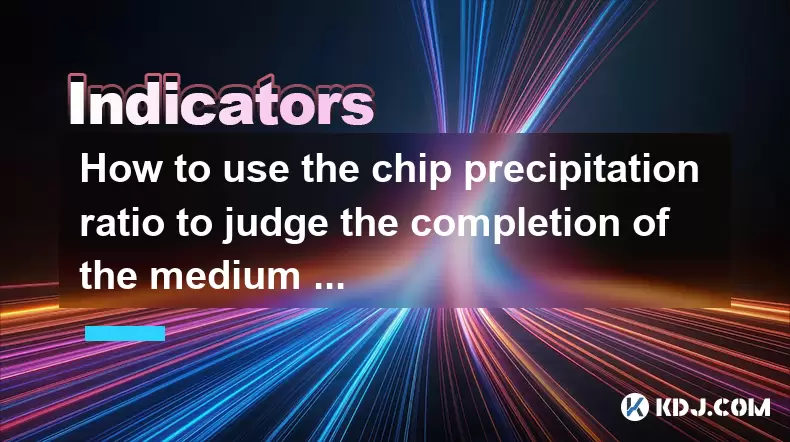
How to use the chip precipitation ratio to judge the completion of the medium and long-term bottom construction?
Jun 04,2025 at 03:36am
The chip precipitation ratio is a crucial metric used by investors to assess the accumulation of chips (or shares) at different price levels over time. This ratio helps in understanding the distribution of chips and can be a powerful tool for determining the completion of medium and long-term bottom construction in the cryptocurrency market. By analyzin...
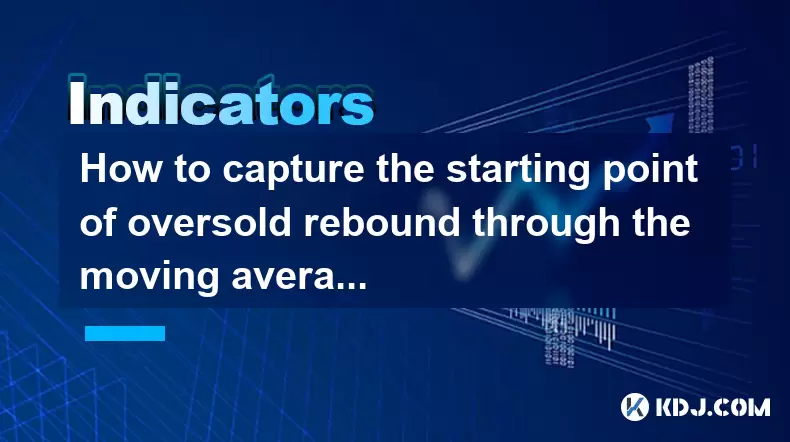
How to capture the starting point of oversold rebound through the moving average gravity reversal strategy?
Jun 04,2025 at 01:01pm
The moving average gravity reversal strategy is a sophisticated approach used by traders to identify potential entry points for buying cryptocurrencies when they are considered oversold. This strategy leverages the concept of moving averages to pinpoint moments when a cryptocurrency might be poised for a rebound. In this article, we will delve into the ...
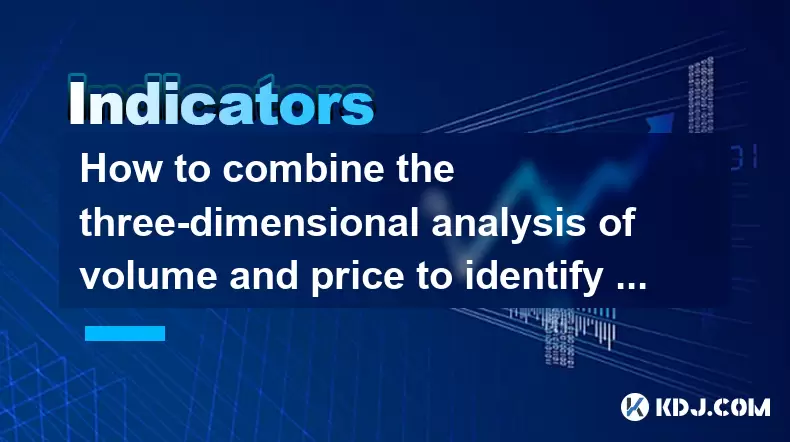
How to combine the three-dimensional analysis of volume and price to identify the golden buying point of breakthrough and retracement?
Jun 03,2025 at 11:42pm
In the dynamic world of cryptocurrencies, identifying the optimal buying points is crucial for maximizing profits and minimizing risks. One effective method to achieve this is by combining three-dimensional analysis of volume and price to pinpoint the golden buying points during breakouts and retracements. This article will delve into how to use this ap...
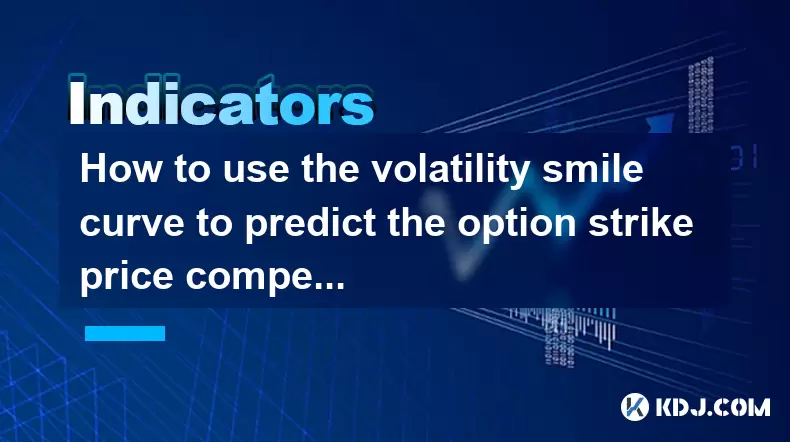
How to use the volatility smile curve to predict the option strike price competition area?
Jun 06,2025 at 01:01pm
The volatility smile curve is a graphical representation that shows the implied volatility of options across different strike prices for a given expiration date. It is called a 'smile' because the curve often takes the shape of a smile, with higher implied volatilities for options that are deep in-the-money or deep out-of-the-money, and lower implied vo...
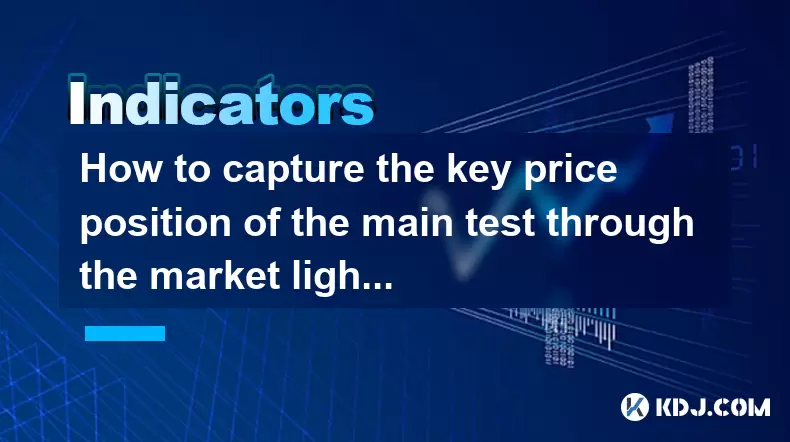
How to capture the key price position of the main test through the market lightning chart?
Jun 02,2025 at 06:07pm
Introduction to Market Lightning ChartThe market lightning chart is a powerful tool used by cryptocurrency traders to visualize price movements and identify key price positions. This chart type provides a detailed view of market activity, allowing traders to spot trends, reversals, and other significant price levels quickly. By understanding how to use ...
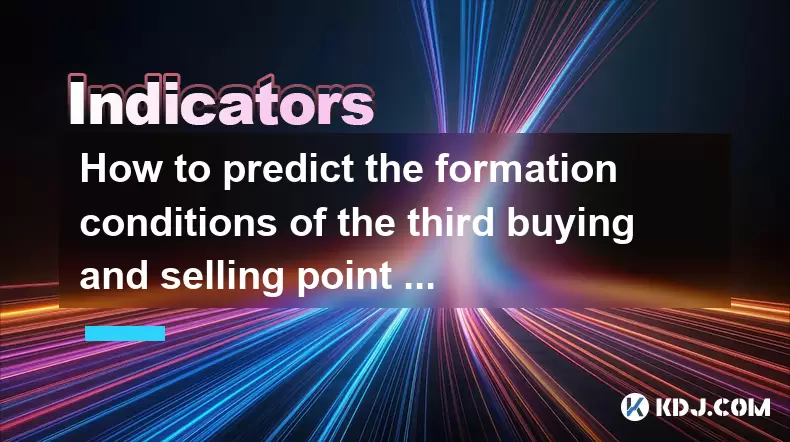
How to predict the formation conditions of the third buying and selling point in combination with the extension of the central axis of the Chaos Theory?
Jun 08,2025 at 12:42am
The concept of predicting the formation conditions of the third buying and selling point in the cryptocurrency market by combining the extension of the central axis of the Chaos Theory is an advanced analytical technique. This method involves understanding the chaotic nature of price movements and using it to identify key moments for trading. In this ar...

How to use the chip precipitation ratio to judge the completion of the medium and long-term bottom construction?
Jun 04,2025 at 03:36am
The chip precipitation ratio is a crucial metric used by investors to assess the accumulation of chips (or shares) at different price levels over time. This ratio helps in understanding the distribution of chips and can be a powerful tool for determining the completion of medium and long-term bottom construction in the cryptocurrency market. By analyzin...

How to capture the starting point of oversold rebound through the moving average gravity reversal strategy?
Jun 04,2025 at 01:01pm
The moving average gravity reversal strategy is a sophisticated approach used by traders to identify potential entry points for buying cryptocurrencies when they are considered oversold. This strategy leverages the concept of moving averages to pinpoint moments when a cryptocurrency might be poised for a rebound. In this article, we will delve into the ...

How to combine the three-dimensional analysis of volume and price to identify the golden buying point of breakthrough and retracement?
Jun 03,2025 at 11:42pm
In the dynamic world of cryptocurrencies, identifying the optimal buying points is crucial for maximizing profits and minimizing risks. One effective method to achieve this is by combining three-dimensional analysis of volume and price to pinpoint the golden buying points during breakouts and retracements. This article will delve into how to use this ap...

How to use the volatility smile curve to predict the option strike price competition area?
Jun 06,2025 at 01:01pm
The volatility smile curve is a graphical representation that shows the implied volatility of options across different strike prices for a given expiration date. It is called a 'smile' because the curve often takes the shape of a smile, with higher implied volatilities for options that are deep in-the-money or deep out-of-the-money, and lower implied vo...

How to capture the key price position of the main test through the market lightning chart?
Jun 02,2025 at 06:07pm
Introduction to Market Lightning ChartThe market lightning chart is a powerful tool used by cryptocurrency traders to visualize price movements and identify key price positions. This chart type provides a detailed view of market activity, allowing traders to spot trends, reversals, and other significant price levels quickly. By understanding how to use ...

How to predict the formation conditions of the third buying and selling point in combination with the extension of the central axis of the Chaos Theory?
Jun 08,2025 at 12:42am
The concept of predicting the formation conditions of the third buying and selling point in the cryptocurrency market by combining the extension of the central axis of the Chaos Theory is an advanced analytical technique. This method involves understanding the chaotic nature of price movements and using it to identify key moments for trading. In this ar...
See all articles

























































































